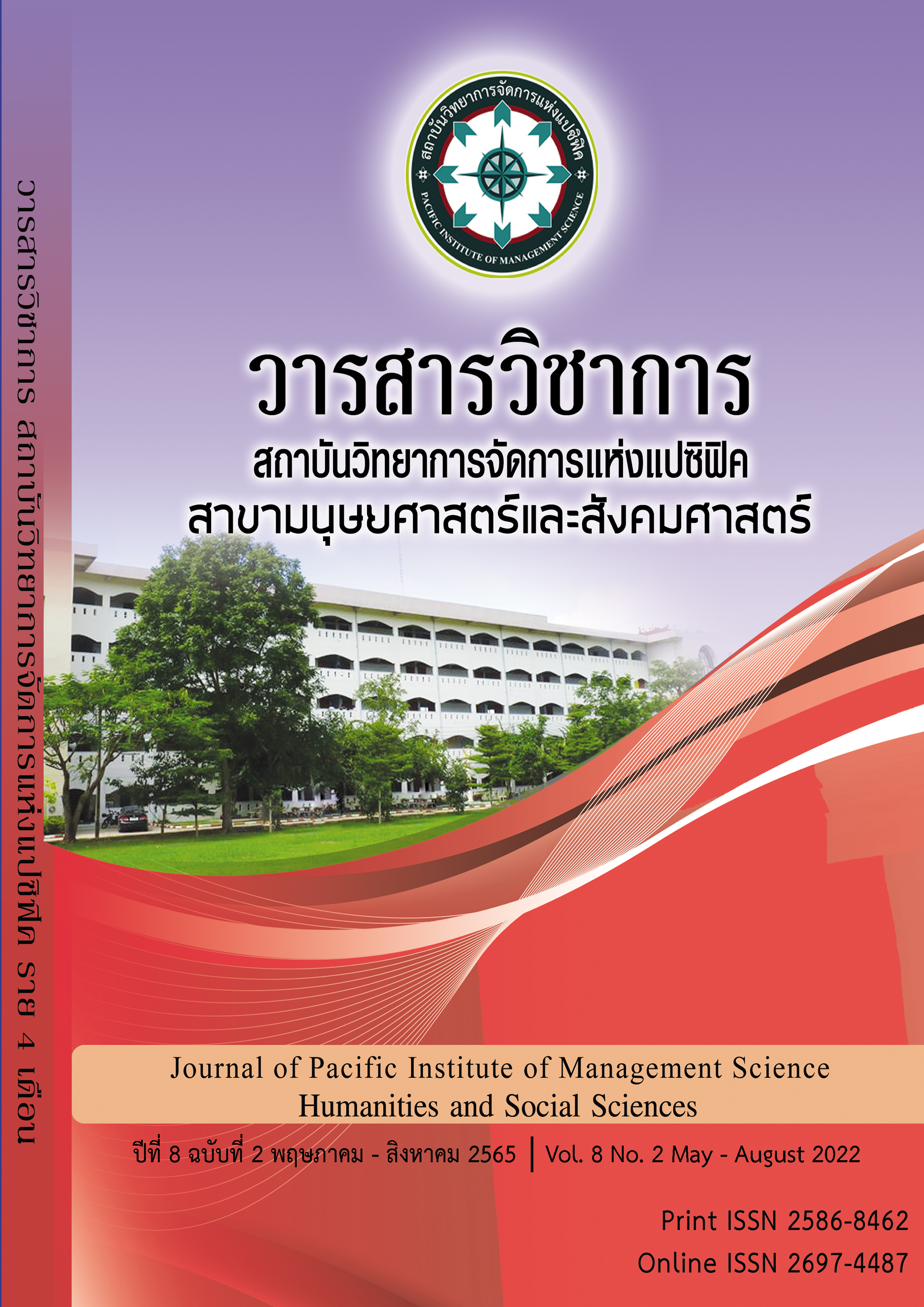A Comparative Study of the Use of Symbols in Thai-Malay Expressions that have the Same or Similar Meanings
Keywords:
comparative study, symbols, Thai idiom, Malay idioms, the same or similar meaningAbstract
This article is based on a research that compares the patterns of expressions in Thai and the Malay language. The objective is to analyse the similarities in meanings of expressions of both languages. Based on qualitative approach data was collected from Royal Institute dictionary of Thai idioms, proverbs and aphorisms (2000) and Malay proverbs from Kamus Istimewa Peribahasa Melayu Edisi Kedua (2006). The article describes the results of the study where 94 Thai-Malay proverbs were compared to study the similarities in terms of meanings. The results can be formatted in two ways: Thai-Malay idioms that have the same or similar meaning. Using the same or partially identical symbols such as water, fish, elephant, dance, tongue, and Thai-Malay expressions that have the same or similar meaning but use different symbols, such as sharp and jar, a pot with water, golden branch, and ring, jade leaf, and gemstone, lace and candy, trees and moulds, etc. It can be deduced that expressions reflect the worldview of people in each society. when two societies have similar social, cultural, and environmental contexts therefore, the worldview of seeing the world and life is similar.
References
กาญจนา นาคสกุล. (2524). การใช้ภาษาไทย. (พิมพ์ครั้งที่ 3). กรุงเทพ: เคล็ดไทย.
กณิกนันต โยธานะ. (2556). การศึกษาเปรียบเทียบสำนวนจีนที่มีคำว่า “chī” กับสำนวนไทยที่มีคำว่า “กิน”. วารสารจีนศึกษามหาวิทยาลัยเกษตรศาสตร. ปที่ 6 ฉบับที่ 6, (145-181).
ณัฐพงศ์ ดวงแก้ว. (2562). พานไหว้ครู’ จากเครื่องบูชา สู่สัญลักษณ์ทางการเมืองและความกล้าหาญทางความคิด. [ออนไลน์].สืบค้นเมื่อวันที่ 20 กันยายน 2563, จาก https://thestandard.co/pedestal-tray-symbols/
นิศา บูรณภวังค์. (2562). สำนวนไทยปลายจวัก: การศึกษาลักษณะและการเลือกใช้สำนวนไทยเกี่ยวกับอาหาร. Dusit Thani College Journal. Vol.13 No.2 May - August 2019.
ผู้จัดการออนไลน์. (2563). ไก่ : สัตว์ปีกสำคัญที่สุดในโลก. [ออนไลน์]. สืบค้นเมื่อวันที่ 05 พฤษภาคม 2565, จากhttps://mgronline.com/science/detail/9630000112602
พจนานุกรมราชบัณฑิตยสถาน. 2543. ภาษิต คำพังเพย สำนวนไทย ฉบับราชบัณฑิตยสถาน / ราชบัณฑิตยสถาน. [ออนไลน์].สืบค้นเมื่อวันที่ 13 เมษายน 2563, จาก http://libapp.tsu.ac.th/ULIB/dublin.php?ID=923
พิชชาภา พลานุมาศ อมรรัตน์ คำด้วง จตุวิทย์ แก้วสุวรรณ์. (2564). การศึกษาเปรียบเทียบสำนวนจีนที่มีคำว่า “虎” กับสำนวนไทยที่มีคำว่า “เสือ” A COMPARATIVE STUDY OF CHINESE IDIOMATIC EXPRESSIONS CONTAINING THE WORD “虎” (TIGER) WITH THAI IDIOMATIC EXPRESSIONS CONTAINING THE WORD “SUEA” (TIGER). วารสารสุทธิปริทัศน์. ปีที่ 35 ฉบับที่ 4 ตุลาคม - ธันวาคม 2564, 74-103.
เพ่ยหลวน พัน สนิท สัตโยภาส และ พิศมัย อําไพพันธุ. (2557). การศึกษาเปรียบเทียบสำนวนไทยกับสำนวนจ้วง (A Comparative Study of Thai and Zhuang Idioms). วารสารมนุษยศาสตร์และสังคมศาสตร์ (สทมส.). ปีที่ 20 ฉบับที่ 2.3 พฤษภาคม-สิงหาคม 2557 ISSN 2408-0845.
ยมนา ทองใบ. (2550). การศึกษาสํานวนไทยที่เกี่ยวข้องกับความเชื่อ. (วิทยานิพนธ์ปริญญาการศึกษามหาบัณฑิต สาขาวิชาภาษาไทย). กรุงเทพมหานคร: มหาวิทยาลัยศรีนครินทรวโรฒ
สุชาดา กุลบุตร. (2555). การศึกษาวิเคราะห์สุภาษิตจีนที่มีตัว 牛. (วิทยานิพนธ์ศิลปศาสตรบัณฑิต). อุบลราชธานี: มหาวิทยาลัยอุบลราชธานี
อิสริยา เลาหตีรานนท์. (2552). สำนักงานราชบัณฑิตยสภา Office of the Royal Society. [ออนไลน์]. สืบค้นเมื่อวันที่ 05 พฤษภาคม 2065, จาก http://legacy.orst.go.th/?knowledges
Abdullah Hussain. (2017). Kamus Istimewa Peribahasa Melayu. Kuala Lumpur: Dewan Bahasa dan Pustaka.
Asmah Haji Omar (1993). Bahasa dan Alam Pemikiran Melayu. Kuala Lumpur: Dewan Bahasa dan Pustaka.
Deacon, T. W. (2003). UG and semiotic constraints. dlm. M. H. Christiansen, dan S. Kirby (Eds.), Language evolution (pp. 83-102). Oxford: Oxford University Press.
DeLoache, J. S. (2004). Becoming symbol-minded. Trends in Cognitive Sciences, 8, 66 – 70.
Dictionary. (2022). [online]. Retrieved May, 08, 2022, from ttps://dictionary.sanook.com/search/dict-th-th-royal-institute.
Glenberg, A. M., dan Robertson, D. A. (2000). Symbol grounding and meaning: A comparison of high-dimensional and embodied theories of meaning. Journal of Memory and Language, 43, 379 – 401.
Hishamudin Isam & Mashetoh Abd. (2017). The Symbol of Minyak [Oil] in Malay Proverbs: An Analysis of the Meaning from the Perspective of Cognitive Linguistics. Melayu Journal. 10 July 2017 NSK new.indb, page 44-63.
Kalam Jiwa. (2017). Jenis-Jenis Cerita Binatang. Retrieved October, 06, 2021, from Jenis-Jenis Cerita Binatang - NYALA (ungguncreative.com).
Kintsch, W. (2008). Symbol systems and perceptual representations. dlm. M. De Vega, A. Glenberg, dan A. Graesser (Eds.), Symbols and Embodiment (pp. 145 – 164). Oxford: Oxford University. Press
Niran Kasri. (2019). ไม้อ่อนดัดง่าย ไม้แก่ดัดยาก หมายถึงอะไร. [online]. Retrieved May, 05, 2022, from https://www.blogsdit.com/2019/10/thairpoverbssmea.
Niran Kasri. (2019). คมในฝัก หมายถึง อะไร ? พร้อมตัวอย่างการใช้งาน. [online]. Retrieved May, 07, 2022, from https://www.blogsdit.com/2019/09/proverbthaikomnaifux.
Office of the Royal Society. (2012). Khai nai Hin (ไข่ในหิน). [online]. Retrieved May, 08, 2022, from http://legacy.orst.go.th/?knowledges.
Shi Wenjuan and Jiang Yuhong. (2015). Comparision and Contrast Between English and Chinese Idioms from Cultural Connotation Perspective. Canada Studies in Literature and language. V10 n1, 102 - 113.
Supatchaya Sawatyothin. (2019). Thai and Chinese Proverb with the Word “Snake”. JOURNAL OF LANGUAGE, RELIGION AND CULTURE. Vol. 8 No. 2 July - December 2019, 100-125.
Tenas Effendy (2003). Peribahasa dalam kehidupan orang Melayu. [online]. Retrieved May, 8, 2022, from http://malaycivilization.ukm.my/ idc/groups/portal_tenas/ documents/ukmpd/tenas_ 42870.pdf.
Downloads
Published
Issue
Section
License
Copyright (c) 2022 Pacific Institute of Management Science

This work is licensed under a Creative Commons Attribution-NonCommercial-NoDerivatives 4.0 International License.
บทความที่ได้รับการตีพิมพ์เป็นลิขสิทธิ์ของ สถาบันวิทยาการจัดการแห่งแปซิฟิค
ข้อความที่ปรากฏในบทความแต่ละเรื่องในวารสารวิชาการเล่มนี้เป็นความคิดเห็นส่วนตัวของผู้เขียนแต่ละท่านไม่เกี่ยวข้องกับสถาบันวิทยาการจัดการแห่งแปซิฟิค และคณาจารย์ท่านอื่นๆในสถาบันฯ แต่อย่างใด ความรับผิดชอบองค์ประกอบทั้งหมดของบทความแต่ละเรื่องเป็นของผู้เขียนแต่ละท่าน หากมีความผิดพลาดใดๆ ผู้เขียนแต่ละท่านจะรับผิดชอบบทความของตนเองแต่ผู้เดียว







